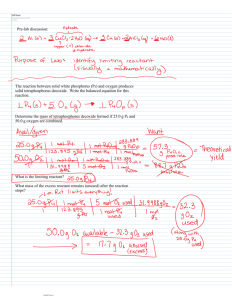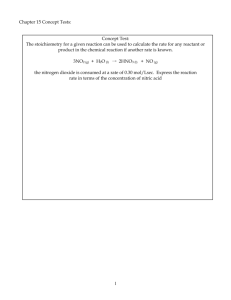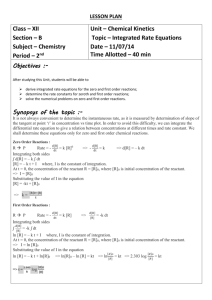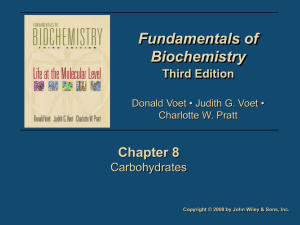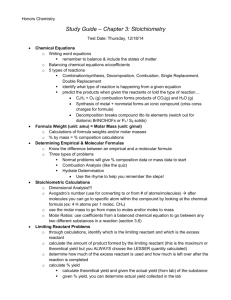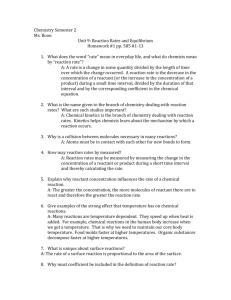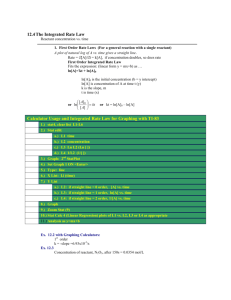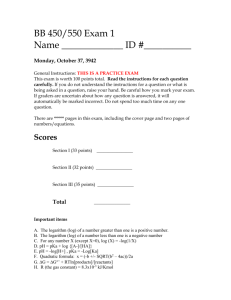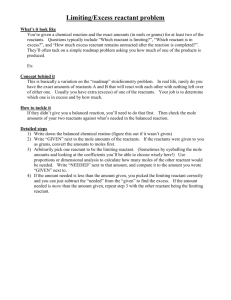BB 450/550 Exam 1 - Oregon State University
advertisement
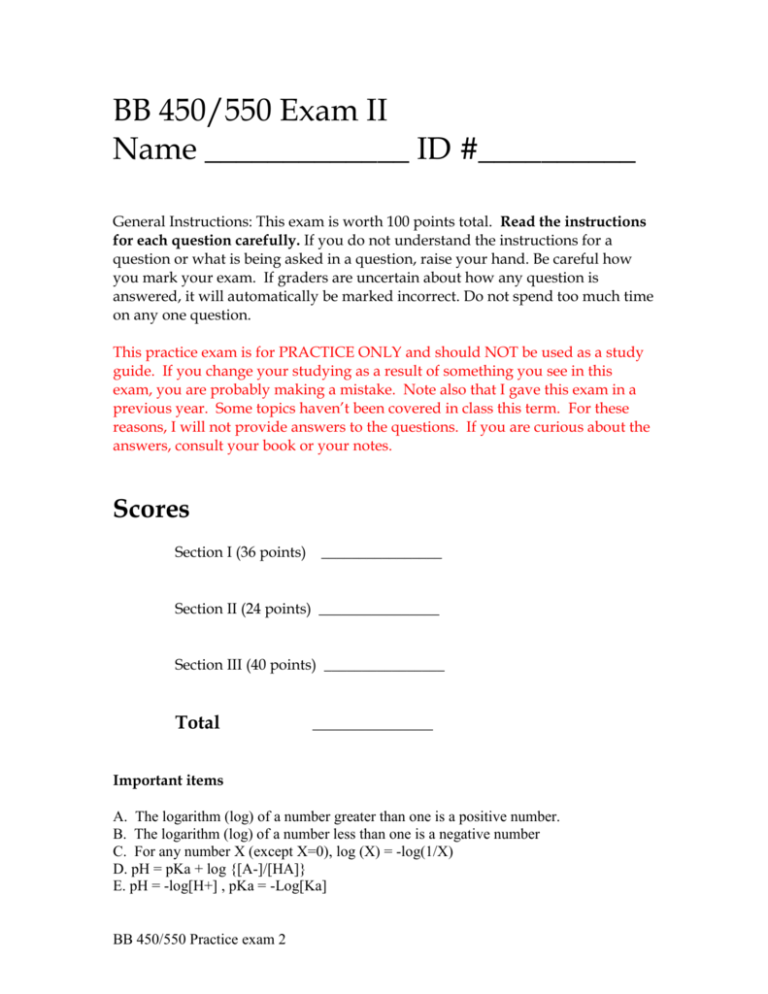
BB 450/550 Exam II
Name _____________ ID #__________
General Instructions: This exam is worth 100 points total. Read the instructions
for each question carefully. If you do not understand the instructions for a
question or what is being asked in a question, raise your hand. Be careful how
you mark your exam. If graders are uncertain about how any question is
answered, it will automatically be marked incorrect. Do not spend too much time
on any one question.
This practice exam is for PRACTICE ONLY and should NOT be used as a study
guide. If you change your studying as a result of something you see in this
exam, you are probably making a mistake. Note also that I gave this exam in a
previous year. Some topics haven’t been covered in class this term. For these
reasons, I will not provide answers to the questions. If you are curious about the
answers, consult your book or your notes.
Scores
Section I (36 points)
________________
Section II (24 points) ________________
Section III (40 points) ________________
Total
________________
Important items
A. The logarithm (log) of a number greater than one is a positive number.
B. The logarithm (log) of a number less than one is a negative number
C. For any number X (except X=0), log (X) = -log(1/X)
D. pH = pKa + log {[A-]/[HA]}
E. pH = -log[H+] , pKa = -Log[Ka]
BB 450/550 Practice exam 2
F. Quadratic formula: x = (-b +/- SQRT(b2 – 4ac))/2a
G. G = G°’ + RTln[products]/[reactants]
H. R (the gas constant) = 8.314x10-3 kJ/Kmol
I. G
eq
Section I – Short answer -
The questions below can generally be answered in 15
words or less. While you will not be required to use 15 words or less, excessively
long answers will be scrutinized closely. Each correctly filled in blank below will be
awarded three points (except as noted).
1. Name two things that will favor the R state of ATCase.
2. Define allosterism (no partial credit for “closeness” or what you “meant”)
3. Why does myoglobin not exhibit cooperativity?
4. Name three distinct cellular mechanisms described in class for controlling enzymes.
5. What do phosphatases catalyze?
6. Which enzyme described in class is the most important activator of proteolytic
zymogens?
7. Imagine you were born without fibrinogen. What molecular process described in class
would you not be able to do?
8. What are neuraminidase inhibitors good for?
9. Name an aldo-pentose described in class.
10. In words, how do enantiomers differ from diastereomers?
11. Name one amino acid side chain to which oligosaccharides are attached in O-linked
glycoproteins.
12. Name one compound described in class that stabilizes the R state of hemoglobin.
BB 450/550 Practice exam 2
Section 2 – Calculations
- For each of the problems in this section, ORGANIZE
and LABEL your calculations clearly. No partial credit will be given without
clearly labeled calculations. (Each correct answer is worth 12 points)
1. A reaction is run and goes in the forward direction. In this reaction, there is twice as
much reactant as product. Is it possible for the same reaction to go forward if there is half
as much reactant as product? You must clearly and mathematically justify your answer.
(ORGANIZE and LABEL).
2. When the reaction (A <=> B) starts, there is three times as much product as reactant.
When it reaches equilibrium, there is twice as much product as reactant. Show how to
calculate G ’ for this reaction.
Section 3 – For each question, provide a brief explanation of the phenomenon.
Long rambling answers that are not to the point will lose points, even if they contain
part of the correct answer. Each correct answer is worth 8 points.
1. A metabolic strategy of several pathways was described in class that oxidizes carboncarbon single bonds adjacent to a carboxyl group and, in doing so, converts the nearby
carbon to a ketone. Show the steps in this process.
2. A cell is found that has high levels of active protein kinase A when the cell is treated
with the compound ahernium. Using pathways discussed in class, illustrate or describe
the steps in how this activation of protein kinase A by treatment of the cells with
ahernium would most likely occur.
3. Explain how oligosaccharides are “built” for N-linked glycoproteins.
4. One cellular protein described in class binds to a specific DNA sequence under some
circumstances, but not others. Explain what the protein is, what the circumstances are,
and how such circumstances are created in the cell.
5. Explain how the Bohr effect favors the release of oxygen and uptake of carbon
dioxide in actively respiring tissues.
BB 450/550 Practice exam 2

